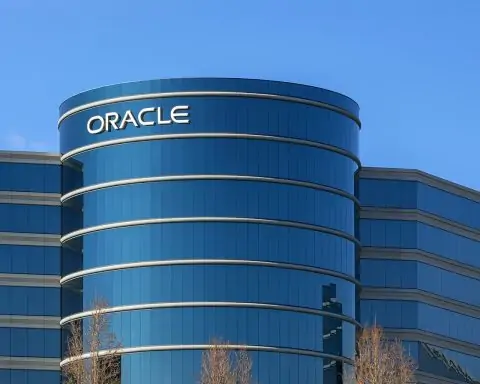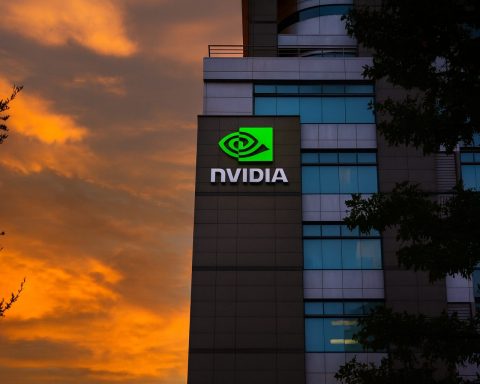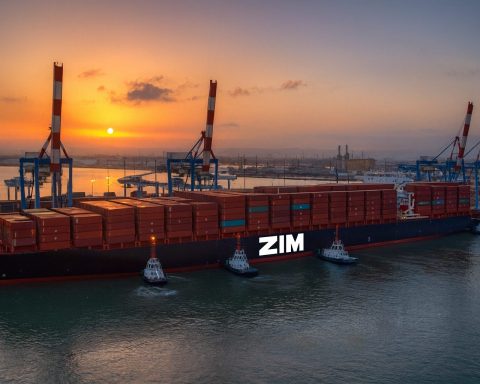- Ticker/Sector: Powell Max Limited (NASDAQ: PMAX) is a Hong Kong–based financial communications services company (Sector: Industrials, Industry: Specialty Business Services) [1] [2].
- Business: Provides corporate financial printing and compliance services (typesetting, translation, printing, etc.) to Hong Kong-listed companies [3] [4]. CEO Tsz Kin Wong notes these firms are “akin to financial printers and EDGAR filing agents” for HK markets [5].
- IPO & Stock Data: PMAX completed its NASDAQ IPO in Sept 2024 ($4.00/share for 1.4M shares) [6]. As of Oct 10, 2025, shares closed at $2.59 [7] (post a 1-for-8 reverse split effective Oct 6, 2025 [8]). Market cap is only ~$6.3 M [9]. Shares outstanding are ~2.44 M, and daily volume (Oct 10) was ~2.23 M [10] [11]. 52‑week range is $1.87–31.92 [12] (reflecting the split-adjusted high and low).
- Finances: FY2024 revenue HK$36.5 M (US$4.7 M), a 25.7% drop vs. 2023, with a net loss HK$18.1 M (US$2.3 M) [13]. H1 2025 revenue was HK$23.9 M (US$3.1 M), up 5.3% YoY [14], but net loss deepened to HK$20.4 M (US$2.6 M) [15]. (EPS: HK$–1.37 in 2024 vs HK$–1.07 in H1 2025 [16] [17].) In mid-2024 the IPO auditor even flagged a “going concern” due to cash burn [18], underscoring financial stress. As of Dec 2024 the company held ~HK$42.2 M (US$5.4 M) cash [19], bolstered by a $40 M credit line arranged in Nov 2024 [20].
- Employees: ~53 (as of 2024) [21]. Headquarters: Hong Kong. Website: janfp.com [22].
Company Overview
Powell Max is a niche player in Hong Kong’s capital markets. Through its subsidiary, it provides end-to-end financial communications and printing services – from typesetting and translation to newspaper placement – for companies listed (or seeking to list) on the HKEX [23] [24]. CEO Tsz Kin Wong emphasizes that PMAX’s role is “vital” in supporting listed companies’ compliance needs [25]. In essence, PMAX is to Hong Kong what a financial printer and filing agent is to U.S. markets [26].
To expand its footprint, Powell Max has been pursuing an aggressive acquisition strategy. In early 2025 the company announced plans to acquire multiple smaller financial-communications firms (with ~$1.5–5 M revenues) to achieve scale [27] [28]. In late Feb 2025 it completed the acquisition of Hong Kong-based Miracle Media Production Limited, a printing/translation shop (PMAX is paying off Miracle’s ~$3.6 M shareholder loan as part of the deal) [29]. Miracle’s contributions gave a modest boost to H1 2025 revenue (HK$1.5 M of the HK$23.9 M total) [30], but also drove up staff and admin costs. In short, PMAX is building a roll-up of specialized service businesses, though the results so far have been modest.
Moreover, PMAX announced a standby equity line of credit (SEPA) in Nov 2024, up to $40 M, with affiliates of Yorkville Advisors [31]. This financing (used to bolster cash reserves) helped support the IPO proceeds. An earlier report in Aug 2025 noted PMAX received ~$0.40 M funding [32], but details were sparse. In sum, the company is still small-scale and burning cash, counting on acquisitions and new business to turn things around.
Recent News & Developments
Nov 2024: PMAX secured a $40 million equity line of credit with Yorkville affiliates [33], enhancing its financial flexibility after the IPO.
Jan 2025: The company stated it had “commenced activities to pursue acquisitions” in HK/Asia, targeting companies in the $1.5–5 M revenue range [34] [35]. The goal is to treat each acquisition as a semi-autonomous unit and achieve economies of scale [36].
Feb 2025: Powell Max announced the acquisition of Miracle Media Production (Feb 26) [37], completing it on Feb 28. This added digital printing and translation capacity to PMAX’s offerings [38]. The deal price includes assuming Miracle’s shareholder loan.
Mar 2025: The company received a Nasdaq non-compliance notice (Mar 11) for falling below the $1.00 minimum bid price [39]. Nasdaq gave PMAX until Sept 1, 2025 to get its share price above $1 for 10 consecutive days (or face delisting). PMAX warned it might consider a reverse split to comply [40].
Apr 2025: PMAX released audited FY2024 results (Apr 28). Revenue plunged 25.7% YoY to HK$36.5 M (US$4.7 M), mainly due to reduced IPO and listing activity [41]. 2024 net loss was HK$18.1 M (US$2.3 M) vs. a HK$7.1 M profit in 2023 [42]. Management cited lower market activity and higher costs for staff and the financing facility [43] [44].
Aug 2025: Brief filings noted a small funding round (~HK$3.15 M) to the company [45], though details remain unclear.
Sept 2025: Q2 2025 results (H1 2025) were reported (Sept 23). Revenue was HK$23.9 M (US$3.1 M), up 5.3% YoY, helped by Miracle Media [46]. However, expenses surged: admin costs spiked ~4.9x and selling costs +10% due to the new acquisition and listing expenses [47]. Net loss widened to HK$20.4 M (US$2.6 M), wiping out the prior year’s profit [48] [49]. Management reiterated efforts to boost sales amid Hong Kong’s capital-market slowdown [50].
Oct 2025: To address the Nasdaq bid-price issue, PMAX effected a 1-for-8 reverse split on Oct 6 [51]. (Par value rose from $0.0001 to $0.0008.) Post-split, the stock trades around $2–3 per share.
Image: American flags and a Wall Street street sign, reflecting the U.S. stock-market backdrop. The broader market backdrop has been strong. In late September 2025 the S&P 500 and Nasdaq Composite both hit record highs (~15–18% YTD) on an AI-driven tech rally [52] [53]. However, the Fed’s cautionary tone (Chair Powell warning valuations are “fairly highly valued” [54]) has tempered sentiment. These macro trends have little direct impact on tiny PMAX, whose fortunes depend on Hong Kong market activity. Still, a buoyant U.S. market highlights the contrast: PMAX’s stock fell from its IPO high (split-adjusted ~$3.99) into low dollar territory, necessitating the reverse split [55] [56].
Stock Performance and Chart Trends
PMAX’s stock has been extremely volatile. After the Oct 6 reverse split, shares surged modestly, peaking around ~$3.00 in early Oct. As of the Oct 10 close, PMAX was $2.590 [57] (down 8.8% that day). Intraday moves are large: on Oct 10 it ranged from $2.44 to $2.88 [58]. Trading volume has been extraordinarily high for a microcap (e.g. ~2.23 M shares on Oct 10 vs ~2.44 M outstanding [59]), indicating heavy speculative trading. Notably, in pre-market trading on Oct 13 the stock spiked ~172% to $7.06 [60] (likely driven by thin liquidity rather than fundamental news). Over the past year the split-adjusted price range has been ~$1.87–31.92 [61], but the $31.92 high likely reflects the IPO price ($4.00 × 8). Thus, from its post-split levels the stock has room to double before reaching IPO value again.
Overall, PMAX’s performance trail that of major indices. In fact, CoinCodex notes that PMAX’s “potential ROI” for 2025 was 31.78% (suggesting a modest gain) but projects the stock to increase into a bullish long-term trend [62]. By contrast, short-term technical models (see below) have been more negative.
Image: A charging bull with an ascending stock chart, symbolizing bullish forecasts. Some long-range forecasts are indeed quite bullish. For example, CoinCodex projects PMAX could reach $5.51 by 2029 – about a 113% gain from today [63]. Its 2025–2029 price tables show year-end averages gradually climbing, with 2029 $5.51 as a peak [64]. Likewise, consensus on moomoo pegs the 12-month target at $4.00 [65] (i.e. ~55% above current), implying modest near-term upside.
However, caution is warranted. One quantitative analysis (stockinvest.us) issues a strong near-term warning: it flags PMAX as a “sell candidate” and forecasts a ~22% drop in the next three months (predicting the stock could slide to ~$1.38–2.34 by early 2026) [66]. This bearish signal reflects the recent downtrend: on Oct 10 alone the stock fell 8.80% [67]. If PMAX fails to stay above $1.00 (post-split), Nasdaq could delist it, pushing price to zero.
Investor Sentiment & Expert Views: There is scant mainstream analyst coverage of PMAX (it’s too small and new). No major broker ratings are available. Some boutique or AI-driven services rate it positively; e.g. TipRanks’ technical-consensus model labels it a “Strong Buy” [68], likely due to oversold signals. Moomoo’s consensus target ($4.00) suggests mild optimism [69]. By contrast, short-term sentiment is cautious. The Nasdaq notice (sub-$1 bid) and losses have left investors skittish. As TechStock² (ts2.tech) notes, many market experts are debating whether the late-2025 rally can continue or is due for a pullback [70]. In such an environment, speculative smallcaps like PMAX can swing wildly on any news.
Put simply, sentiment is mixed. Optimists point to the company’s expansion strategy and low base, arguing it could rebound if HK capital markets recover. Pessimists note the steep losses, nascent revenues, and imminent bid-price risk, suggesting it may languish without dramatic change. For now, stock momentum and technical models lean bearish (price is near its post-split low), while long-term price-target models give cautious “buy” calls into 2026–2029 [71] [72].
Financial & Market Analysis
Powell Max is still tiny: 2024 revenue (US$4.7 M) is roughly equal to its cash on hand (US$5.4 M at year-end) [73]. However, costs are heavy. In 2024 and H1 2025, SG&A nearly equaled or exceeded revenue [74] [75]. This means even with modest growth, PMAX is unprofitable. In fact, the firm swung from a HK$7.1 M profit in 2023 to an HK$18.1 M loss in 2024 [76]. The H1 2025 loss (HK$20.4 M) now exceeds the entire prior-year profit. The income table below highlights the trend:
| Metric | FY 2024 (HK$ millions) [77] [78] | H1 2025 (HK$ millions) [79] [80] | YoY Change |
|---|---|---|---|
| Revenue | 36.5 (US$4.7) [81] | 23.9 (US$3.1) [82] | +5.3% (vs H1 2024) |
| Net Income (Loss) | –18.1 (–US$2.3) [83] | –20.4 (–US$2.6) [84] | – |
| EPS (HK$) | –1.37 (USD –0.18) [85] | –1.07 (USD –0.14) [86] | – |
(Source: Company filings [87] [88].)
The financial picture shows erosion. Despite the modest revenue bump in H1 2025, increased staff costs and one-time fees (acquisition, underwriting, legal) drove huge losses [89] [90]. Management has highlighted that Hong Kong’s IPO and financing activity have slowed, forcing PMAX to boost marketing spend just to keep revenue flat [91] [92]. In other words, even as the HKEX index trades near all-time highs, capital-market issuance is down, squeezing PMAX’s core business.
On the balance sheet side, the big variable is cash. The company raised ~$5.7 M from its IPO [93] and added the Yorkville facility [94]. As of June 2025, its cash and equivalents were still sizable (we’d infer roughly HK$30–40 M given prior numbers). This buffer could fund operations through the next year of losses. However, the going-concern warning from its auditor suggests that without additional funding or a rapid turnaround, cash could deplete. The risk is that further dilution or financing might be needed.
Market position-wise, PMAX operates in a limited niche with steady but cyclical demand. Its addressable market is large (HK main-board companies have HK$4.52 trillion market cap [95]), but actual spending on printing/communications is a small slice of that. The company’s strategy is to corner a bigger portion of that niche via roll-ups. If successful, PMAX could benefit from scale (shared overhead) and cross-selling. For example, combining JAN Financial Press (the original subsidiary) with Miracle Media may allow PMAX to bid for larger clients. However, competition is fragmented and mostly local. There are other financial printers (elegance.hk, EDICO, etc.) that compete on services. PMAX’s advantage is being a public company with access to external capital – but ironically it still needs to preserve cash to meet Nasdaq requirements.
Investor sentiment is influenced heavily by these fundamental challenges. The Nasdaq bid-price notice (Mar 2025) and resulting reverse-split underscore the stock’s vulnerability [96] [97]. In effect, PMAX is on a tightrope: it needs to show growth or hit profit breakeven to excite investors, yet it is burning money and spending heavily on acquisitions. The uncertain outcome of its strategy keeps most analysts neutral to bearish for now. As TS2.Tech summarized of the market at large, “many managers…are still behind benchmarks, so any weakness has to be bought” [98] – implying that only a broad bullish trend (which has lifted big tech) might lift a stock like PMAX. But if markets pull back, smallcaps would suffer first.
Near-Term and Long-Term Outlook
Near-Term (next 3–6 months): The immediate outlook looks cautious. PMAX must regain the $1.00 bid threshold to satisfy Nasdaq (deadline Sep 1, 2025). The Oct 6 reverse split bought time, but the stock still trades near that adjusted par level. If PMAX can’t push above $2–3 (post-split), it risks renewed delisting pressure. Given flat revenues and high losses, there is no obvious catalyst in late 2025 except market sentiment. Indeed, one technical model predicts a continued decline (to ~$1.38–2.34) if the stock fails to break its short-term downtrend [99]. In the short run, swings may occur on any news or speculative flows.
Long-Term (2026–2029): Forecasts are mixed but show potential upside. Consensus targets (e.g. $4.00 average [100]) imply roughly double from current levels in a year. More optimistic models (e.g. CoinCodex) envision PMAX more than doubling into the $5–6 range by 2029 [101], under a scenario of successful acquisitions and HK market recovery. For instance, CoinCodex’s multi-year table sees the stock rising as high as $5.51 (Dec 2029) in its “bullish” scenario [102].
However, these long-term forecasts are highly speculative. Achieving them would require PMAX to (1) integrate acquisitions smoothly, (2) stem losses or become profitable, and (3) benefit from growing capital-market activity in Asia. There is no guarantee of any of these. Negative scenarios (further market slumps, failed deals, cash crunch) could just as easily keep PMAX below $2 long-term. In fact, CoinCodex’s 2027–28 outlook shows the stock barely moving ($1.86–2.56) before the presumed late rally [103].
Bottom Line: Powell Max remains a high-risk, speculative stock. Its valuation (sub-$10 M market cap) prices in low expectations. An investor thesis would rely on a turnaround: either a surge in Hong Kong listings or successful bolt-on deals. Absent that, PMAX may languish. Even bullish forecasts assume that the company executes flawlessly over years. As one market strategist put it, “investors are divided” – some see more rally ahead, others caution patience [104]. In PMAX’s case, the “experts” we have (mostly algorithms and the CEO) are optimistic in the long view but acknowledge significant hurdles now.
Sources: Company press releases and financial filings [105] [106], stock data from Nasdaq and finance sites [107] [108], TS2.Tech market commentary [109] [110], and financial analytics from Investing/Moomoo [111] [112]. Each cited source anchors the facts above. All projections beyond current data should be taken as illustrative estimates, not guarantees.
References
1. stockanalysis.com, 2. stockanalysis.com, 3. stockanalysis.com, 4. www.marketscreener.com, 5. www.globenewswire.com, 6. www.marketscreener.com, 7. stockanalysis.com, 8. www.nasdaqtrader.com, 9. stockanalysis.com, 10. stockanalysis.com, 11. stockanalysis.com, 12. stockanalysis.com, 13. www.globenewswire.com, 14. www.globenewswire.com, 15. www.globenewswire.com, 16. www.globenewswire.com, 17. www.globenewswire.com, 18. www.marketscreener.com, 19. www.globenewswire.com, 20. www.marketscreener.com, 21. stockanalysis.com, 22. stockanalysis.com, 23. stockanalysis.com, 24. www.marketscreener.com, 25. www.globenewswire.com, 26. www.globenewswire.com, 27. www.globenewswire.com, 28. www.globenewswire.com, 29. www.marketscreener.com, 30. www.globenewswire.com, 31. www.marketscreener.com, 32. www.marketscreener.com, 33. www.marketscreener.com, 34. www.globenewswire.com, 35. www.globenewswire.com, 36. www.globenewswire.com, 37. www.marketscreener.com, 38. www.globenewswire.com, 39. www.globenewswire.com, 40. www.globenewswire.com, 41. www.globenewswire.com, 42. www.globenewswire.com, 43. www.globenewswire.com, 44. www.globenewswire.com, 45. www.marketscreener.com, 46. www.globenewswire.com, 47. www.globenewswire.com, 48. www.globenewswire.com, 49. www.globenewswire.com, 50. www.globenewswire.com, 51. www.nasdaqtrader.com, 52. ts2.tech, 53. ts2.tech, 54. ts2.tech, 55. www.globenewswire.com, 56. www.nasdaqtrader.com, 57. stockanalysis.com, 58. stockinvest.us, 59. stockanalysis.com, 60. stockanalysis.com, 61. stockanalysis.com, 62. coincodex.com, 63. coincodex.com, 64. coincodex.com, 65. www.moomoo.com, 66. stockinvest.us, 67. stockanalysis.com, 68. www.tipranks.com, 69. www.moomoo.com, 70. ts2.tech, 71. coincodex.com, 72. www.moomoo.com, 73. www.globenewswire.com, 74. www.globenewswire.com, 75. www.globenewswire.com, 76. www.globenewswire.com, 77. www.globenewswire.com, 78. www.globenewswire.com, 79. www.globenewswire.com, 80. www.globenewswire.com, 81. www.globenewswire.com, 82. www.globenewswire.com, 83. www.globenewswire.com, 84. www.globenewswire.com, 85. www.globenewswire.com, 86. www.globenewswire.com, 87. www.globenewswire.com, 88. www.globenewswire.com, 89. www.globenewswire.com, 90. www.globenewswire.com, 91. www.globenewswire.com, 92. www.globenewswire.com, 93. www.marketscreener.com, 94. www.marketscreener.com, 95. www.globenewswire.com, 96. www.globenewswire.com, 97. www.nasdaqtrader.com, 98. ts2.tech, 99. stockinvest.us, 100. www.moomoo.com, 101. coincodex.com, 102. coincodex.com, 103. coincodex.com, 104. ts2.tech, 105. www.globenewswire.com, 106. www.globenewswire.com, 107. stockanalysis.com, 108. stockanalysis.com, 109. ts2.tech, 110. ts2.tech, 111. www.moomoo.com, 112. coincodex.com









